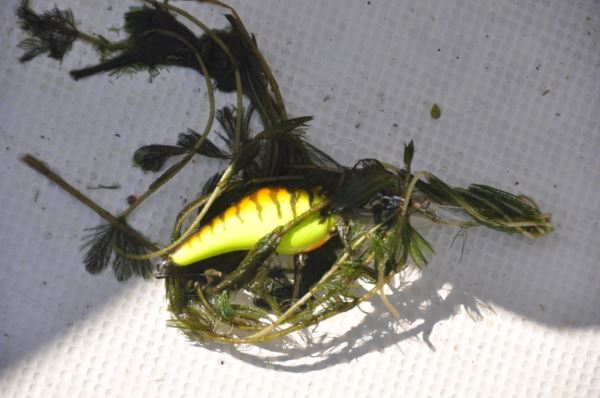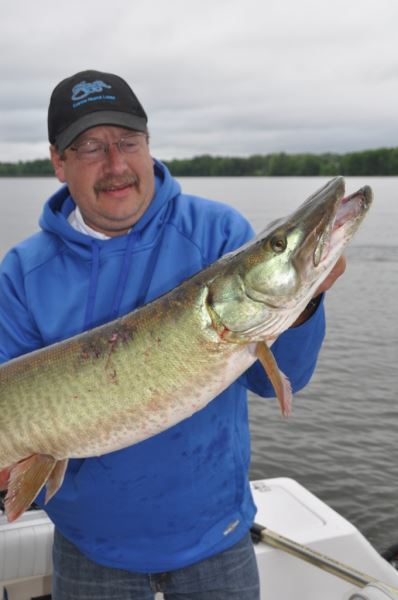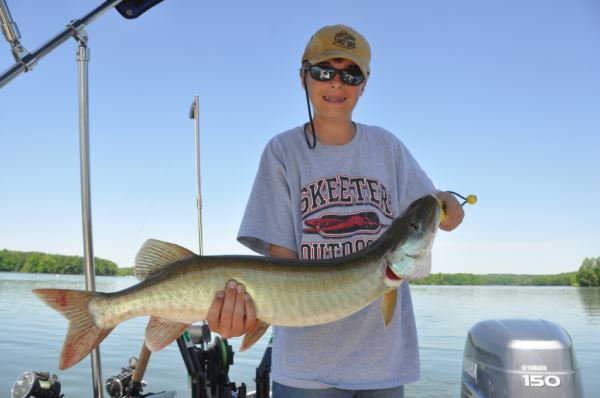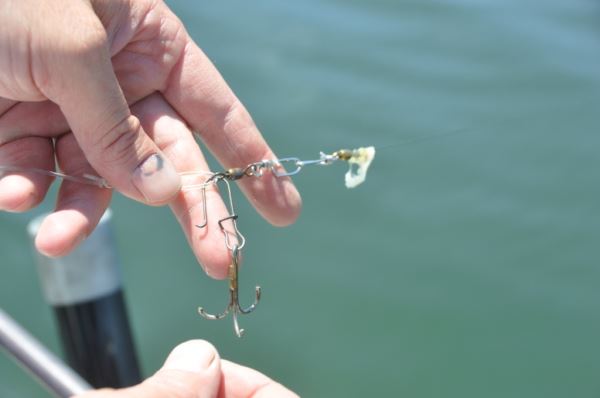
“Come summer, you’ve got to work the weeds to find fish,” said my host, who was chaperoning me around a lake known for holding a sizeable population of muskellunge. Nicknamed “The Fish of Ten Thousand Casts,” the ‘muskie’ is an apex predator, which means its numbers are few in any water system it inhabits, and anglers targeting the toothy trophies have been known to go for days between strikes.
Like most predatory gamefish, muskies use weeds as cover for ambushing baitfish—just as the prey fish themselves use the vegetation to hide and feed on algae, scuds and other aquatic insects. Thick mats of vegetation also offer shade, keeping waters below them cooler that those exposed to strong summer sunlight. Whether you are after bass, trout, pike, walleye or panfish, fishing the weeds is the way to go.
Needed Adjustment

Aquatic weed growth peaks in the heat of summer, frustrating fishermen who continue to use tactics that worked when the water was vegetation-free earlier in the season. But those anglers who adjust their methods and concentrate on weeds can continue to catch fish long past the Dog Days of summer. The problem is, most anglers are aware only of shoreline weeds found in the shallows and often seen on the surface. While these thick beds of lily pads, coontail, milfoil and other varieties of plants and weeds will hold fish in the heat of summer, it’s important to fish submerged weedbeds as well. Underwater weeds offer the same benefits of shade and cover as the beds formed on the surface this time of year, with the added benefit of often being found in the vicinity of underwater springs, which can introduce cooler water to concentrate baitfish and predators alike that prefer lower water temperatures.
Locating submerged weeds is simply a matter of watching your fish-finder for marks extending vertically from the bottom. The marks will be weaker than those of rocks, wood or fish below, but will be readily apparent, often rising dramatically and extending several feet off the bottom. Another way to find weedbeds is by trolling or drifting baits on or near the bottom and noting when—and where—their hooks become entangled in weedy growth.
Mark Your Spot
 Once a submerged weedbed has been located, having a floating marker buoy handy will allow you to mark the spot—as will pinpointing it with a waypoint on a GPS-enabled fish-finder. Some anglers who concentrate on fishing the weeds will carry several buoys to allow them to mark the edges of the submerged beds so that they can identify and work the entire area of underwater growth.
Once a submerged weedbed has been located, having a floating marker buoy handy will allow you to mark the spot—as will pinpointing it with a waypoint on a GPS-enabled fish-finder. Some anglers who concentrate on fishing the weeds will carry several buoys to allow them to mark the edges of the submerged beds so that they can identify and work the entire area of underwater growth.
Whether fishing surface weeds or submerged vegetation, it’s important to work the edges of the beds, and that ‘edge’ extends to the top and all sides of submerged vegetation. Edges are key for two reasons. First, even when using ‘weedless’ lures, the plants will snag and foul your baits if they are presented in the midst of the growth. The second reason to keep your baits close to—but not in—the weeds is that the predator fish you are likely pursuing will hide just inside the edge of the vegetation where they expect to see and ambush minnows and insects and frogs and other prey that finds itself in that transition zone and presents an easy meal target. No matter how vulnerable your bait may appear to these fish, they may not be willing to move far from the protection of the weeds to eat an offering presented too far from their vegetative lair, so it’s important to keep presentations tight to the weeds.
The Right Tackle
 That said, some lures are made specifically for casting right on top of dense mats of surface weeds. The topwater baits, most of which imitate frogs or mice, are designed to keep the hooks facing upright and away from the weeds and tight against the lures’ soft plastic bodies that give way to expose the barbs when munched on by a hungry bass or pike.
That said, some lures are made specifically for casting right on top of dense mats of surface weeds. The topwater baits, most of which imitate frogs or mice, are designed to keep the hooks facing upright and away from the weeds and tight against the lures’ soft plastic bodies that give way to expose the barbs when munched on by a hungry bass or pike.
Soft plastic “stick”-shaped baits are also popular weed-bed offerings because the tip of the hook can be turned and lightly imbedded in the lure’s body to make it streamlined and nearly weedless. Cast and retrieved over submerged beds or around surface growth, these soft-plastic baits are among the most effective lures you can use for predator species hiding in the grass.
Live bait anglers targeting weedbeds cast bobbered baits to the edge of the beds or use vertical presentations at the end of extremely long rods, dropping rather than casting their baits into open potholes back in the beds.
Back on the muskie lake, we found fish holding in the thick stuff, just as my host had predicted. Trolling crankbaits and giant spinners right along the edges of submerged vegetation growing on two mid-lake humps, we took two fish in five hours of effort—a banner day when targeting a species known for being selective about its summer dining options.

